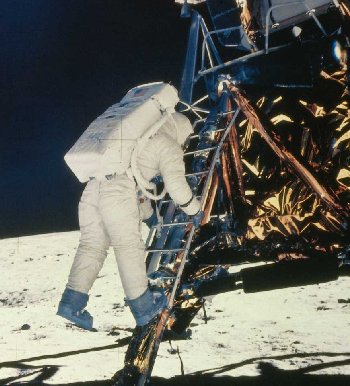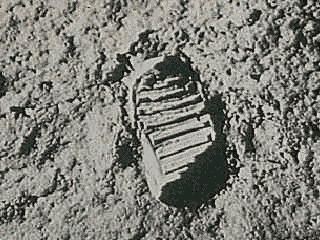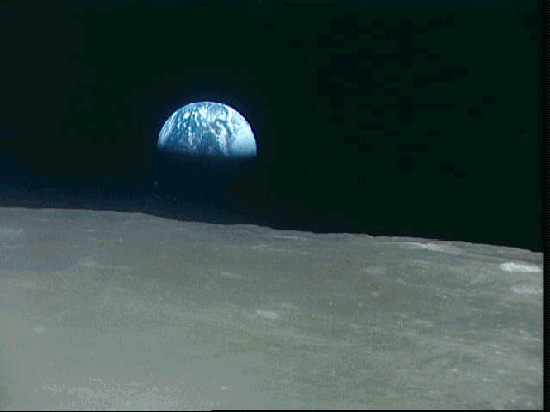Moonfall: 1969
Today, we ask what really happened on July 20th, 1969. The University of Houston's College of Engineering presents this series about the machines that make our civilization run, and the people whose ingenuity created them.
"Pale moon, why is everything at sixes and at sevens?" sings the distraught captain of the Good Ship Pinafore as his life goes to pieces. The pale moon has held our hearts since we were only beasts. Why indeed, now that we have stepped upon its face, is everything at sixes and at sevens!
Getting there should've been the great glory of our species 25 years ago. But the moon had been too large in our heads, and, for just a moment, it became too small in our eyes. When Neil Armstrong's foot hit the dust, we stopped seeing with our hearts and turned our backs on the greatest human adventure.
Science fiction had built the moment up. Arthur C. Clarke rightly showed us the great gray monolith of human transformation there on the moon's seemingly barren soil. Poetry had prepared us for so much more. "That orbed maiden, with white fire laden, Whom mortals call the Moon," wrote Shelley. With that sort of thing burning in our minds, Armstrong's hop suddenly did look like one very small step for a man.
And so, that July night, so long ago, we abruptly aborted the adventure. The very next year we began cutting our space program to bits. We did the run of Apollo flights; then we never went back. Of course that was a dreadful error.
We are an expanding species, hungry for new worlds and new adventure. The moon may seem layered with dead dust, but the mind can see what the eye cannot see in that dust. There is an amazing, low-gravity, windless, perfectly clean world where we can work scientific and manufacturing miracles.
More than that, it's the perfect staging point. It is the space station from which we can step off into the reaches of profoundly deep space. It was all there, staring us in the face on that July night a quarter century ago. And all we could see was the drab flickering screen of our black-and-white TVs. I think Thoreau said it best when he wrote:
The youth gets together his materials to build a bridge to the moon, or, perchance, a palace or temple, on the earth, and, at length, the middle-aged man concludes to build a woodshed with them.
And we, God help us, turned from youth to middle age on that strange and momentous summer night.
The time's come to let go of 1969 and begin again. It's time to validate what we did 25 years ago, not by blowing it into a success that it wasn't, but by building a new space program on our age-old, still-valid, dream of going to the stars.
"Yon rising moon ... looks for us again," says Omar Khayyam. She surely does. I wonder how long we'll make her wait.
I'm John Lienhard, at the University of Houston, where we're interested in the way inventive minds work.
(Theme music)
Too much is being written about this 25th anniversary. However, I highly recommend an insightful book review by Alex Roland, How we Won the Moon, New York Times Book Review, July 17, 1994, pp. 1 and 25.
The "Pale moon" line is from William Gilbert's libretto of the operetta H.M.S. Pinafore.
The "orbed maiden" line is from Percy Shelley's poem The Cloud.
The Thoreau quote is from his Journal entry of July 14, 1852 -- 117 years and 2 days before Apollo 11 blasted off on its epic trip to the moon.
The "Yon rising moon" line is from Edward Fitzgerald's translation of the Rubaiyat of Omar Khayyam. New York: Random House, 1947. In Fitzgerald's first edition, this appears as Stanza 74 in the words,
Ah, Moon of my Delight who know'st no wane
The Moon of Heav'n is rising once again:
How oft hereafter rising shall she look
Through this same Garden after me -- in vain!
It is in Fitzgerald's third and later editions that this becomes Stanza 100, rewritten as:
Yon rising Moon that looks for us again --
How oft hereafter will she wax and wane;
How oft hereafter rising look for us
Through this same Garden -- and for one in vain

Clipart

Clipart

Image courtesy of NASA
Earthrise